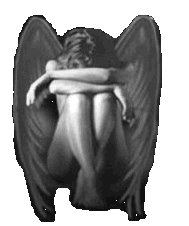| Airship LS11, shot down on 01 August 1916 |
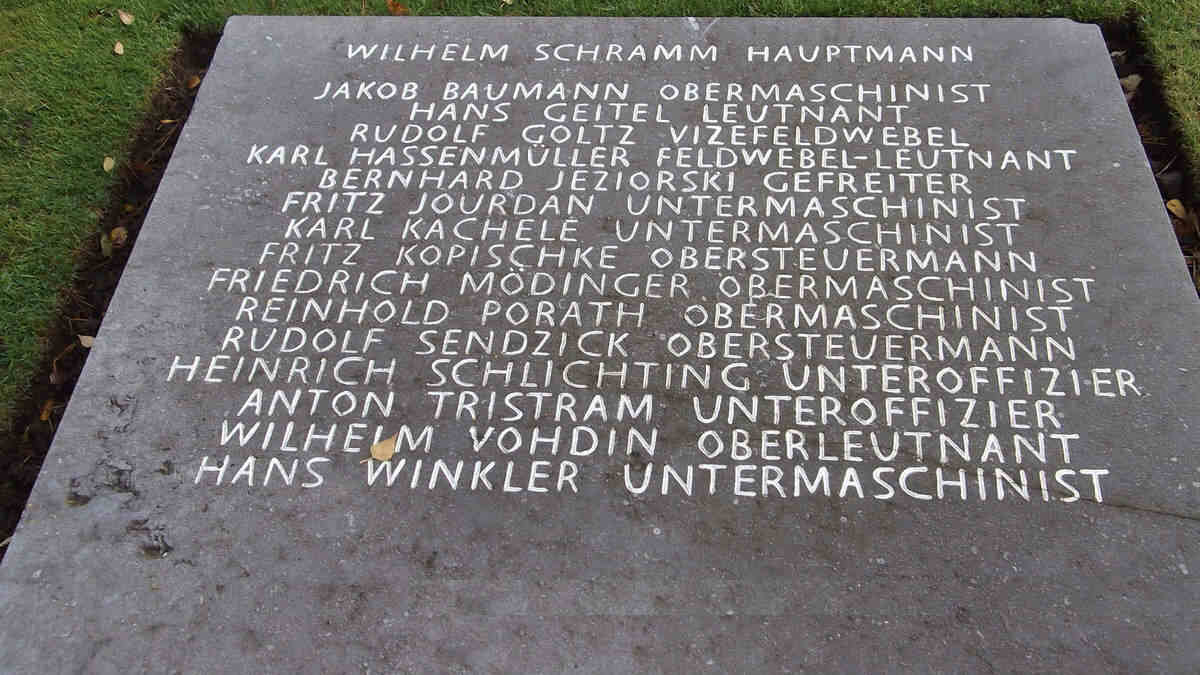
The grave of the crew of LS11 |
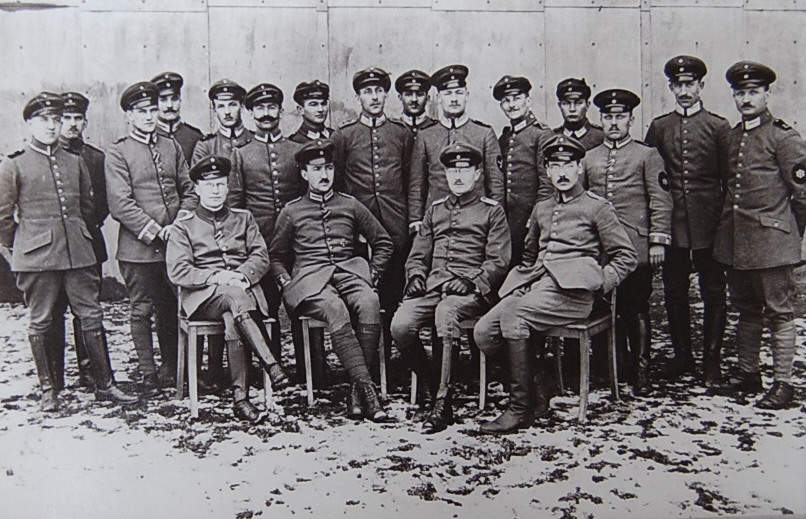
The crew of LS11 |
Wilhelm Schramm, Hauptmann
Jakob Baumann, Obermaschinist
Hans Geitel, Leutnant
Rudolf Golz, Vizefeldwebel
Karl Hassenmüller, Feldwebel-Leutnant
Bernhard Jeziorski, Gefreiter
Fritz Jourdan, Untermaschinist
Karl Kachele, Untermaschinist
Fritz Kopischke, Obersteuermann
Friedrich Mödinger, Obermaschinist
Reinhold Porat, Obermaschinist
Rudolf Sendzick, Obersteuermann
Heinrich Schlichting, Unteroffizier
Anton Tristram, Unteroffizier
Wilhelm Vohdin, Oberleutnant
Hans Winkler, Untermaschinist |
|
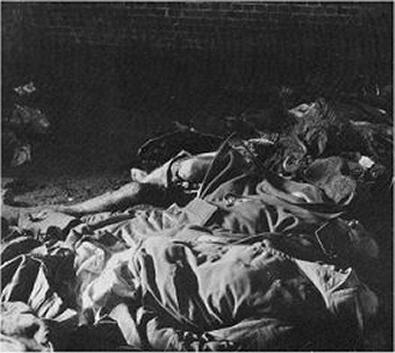
The bodies of the crew of LS11 |
|
Wilhelm Schramm
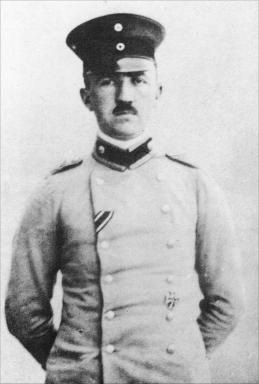 | Hauptmann Wilhelm Schramm had been born at Old Charlton, Kent, and lived in England until the age of 15 when on the death of his father, the London representative of the Siemens electrical firm, he returned to Germany and joined the army. He was given his first command in December 1915.
The SL-11, commanded by Wilhelm Schramm, arrived over northern London at St. Albans. As she bombed the northern suburbs, the airship was picked up by searchlights at Finsbury and Victoria Parks. Turning back to the north, the SL-11 was spotted by Second Lieutenant Robinson, the same pilot who had seen the LZ-98. Robinson approached and fired two full drums of the new Brock-Pomeroy ammunition to no effect. As the zeppelin cleared the searchlight defenses, the British plane made one more pass, firing another full drum into the airship's side. This time, a bright glow showed inside the ship, and within seconds, the fabric burned away as the airship turned into a blazing torch. Her slow descent to earth at Cuffley was not only seen by all of London, but also by the Navy zeppelins then making their approach. The L-16, commanded by Erich Sommerfeld was less than a mile away from SL-11 when she burst into flames, and she attracted the attention of one of the British pilots chasing SL-11. Sommerfeld however, sped off to the north, escaping the glare before the British planes could arrive at his position. Of all the airships, Frankenberg in the L-21 correctly deduced to cause of SL-11's loss. He and his crew 30 miles to the north could plainly see two aircraft around the Army airship, and after she caught fire, one was seen to drop red and green flares (which Robinson did do). The rest of the airships completed their bombing runs all across eastern England and safely returned to their bases, having dropped a total of 17 tons of explosives on English soil. The bombing caused £21,000 worth of damaged, at the cost of 16 airshipmen dead, and one £93,000 airship lost. |
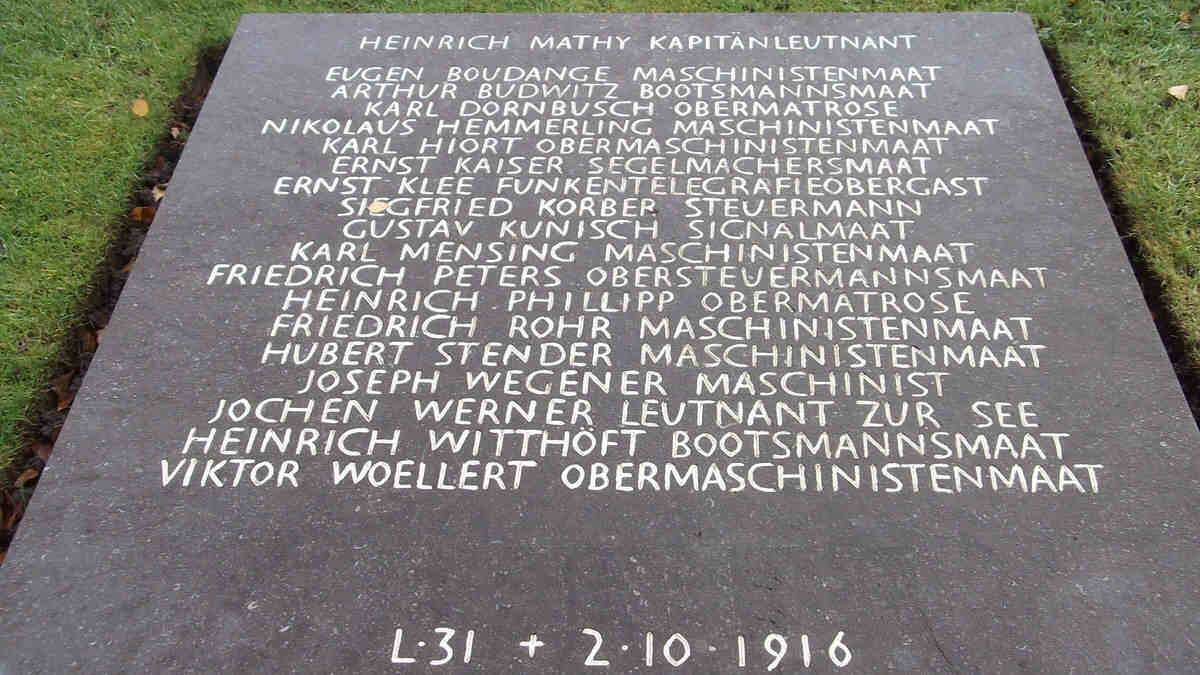
The grave of the crew of L31 |
|
Heinrich Mathy, Kapitänleutnant
Eugen Boudange, Maschinistenmaat
Arthur Budwitz, Bootsmannsmaat
Karl Dornbusch, Obermatrose
Nikolaus Hemmerling, Maschinistenmaat
Karl Hiort, Obermaschinistenmaat
Ernst Kaiser, Segelmachermaat
Ernst Klee, Funkentelegrafieobergast
Siegfried Korber, Steuermann
Gustav Kunisch, Signalmaat
Karl Mensing, Maschinenmaat
Friedrich Peters, Obersteuermannsmaat
Heinrich Phillipp, Obermatrose
Friedrich Rohr, Maschinistenmaat
Hubert Stender, Maschinistenmaat
Joseph Wegener, Maschinist
Jochen Werner, Leutnant zur See
Heinrich Witthöft, Bootsmannsmaat
Viktor Woellert, Obermaschinistenmaat |
|
Heinrich Mathy
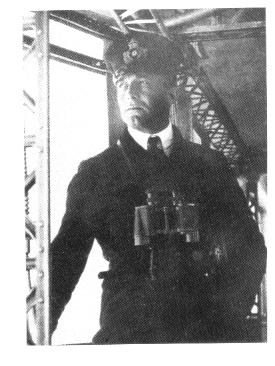 | Kapitänleutnant Heinrich Mathy born 4th April, 1883 at Mannheim, Germany, died 2nd January, 1916 at Potters Bar, England.
Kapitanleutnant Heinrich Mathy achieved a rare accolade during the Great War; he was one of very few Germans whose names were household words in Britain. During the "Zeppelin Scourge" of 1915 and 1916, Mathy was known and feared as the most daring and audacious of all the Zeppelin raiders.
Born on 4th April, 1883 in Mannheim, Mathy decided, while still a boy, that he wished to make his career in the German Navy. He was an exceptional cadet and achieved command of his own ship earlier than was usual in those days.
Having been selected for a possible Naval Staff role, he spent two years at the "Marine Akademie" and it was during his two summers there, 1913 and 1914, that he was able to fly in Count Fedinand von Zeppelin's dirigible airships.
At the beginning of 1915, Mathy was tranferred to airships at the insistence of Peter Strasser, ( Führer der Luftschiffer - Leader of airships) and took part in his first raid on England a few days later, on 13th January, being forced to turn back on this occasion because of bad weather. Later, however, he flew on several raids over England, usually over Northern England. On 8th September, 1915, Mathy's L13 italic) caused great damage by fire to the central area of London itself, and further damage was caused when Mathy returned to the capital on the night of 13th/14th October.
By the following Summer, Mathy, in command of the new ship, L31 was ready for more attacks on London. He attacked on the night of 24th/25th August, 1916, again causing considerable damage. The L31 was damaged on landing on this occasion and while it was grounded for repairs, news came in that the British had, for the first time, managed to shoot down an airship by using incendiary bullets.
As more airships crashed to earth in flames in the following weeks, Mathy must have known that the days of the airship as a terror-weapon were numbered. He wrote:
"It is only a question of time before we join the rest. Everyone admits that they feel it. Our nerves are ruined by mistreatment. If anyone should say that he was not haunted by visions of burning airships, then he would be a braggart."
Mathy and his crew "joined the rest" when L31 attacked London for the last time on the night of 1st/2nd October, 1916, to be shot down in flames by 2/Lieut. W. J. Tempest. The ship fell just oustide Potters Bar, to the North of London. Mathy's body was found some way from the wreckage of the ship, half-embedded in the corner of a field. Obviously, his last act had been to leap clear of the falling inferno rather than wait for the crash. According to some accounts, he lived for a few minutes after striking the earth.
Originally buried at Potters Bar, the bodies of Mathy and his crew were moved in the early 60s to Cannock Chase in Staffordshire, where a new cemetery had been constructed for the burial of all Germans from both World Wars who died on British soil. He lies buried there with his crew, near the entrance, along with the commanders and crews of the other three airships which were shot down over England. |
| Airship L32, shot down on 24 September 1916 |
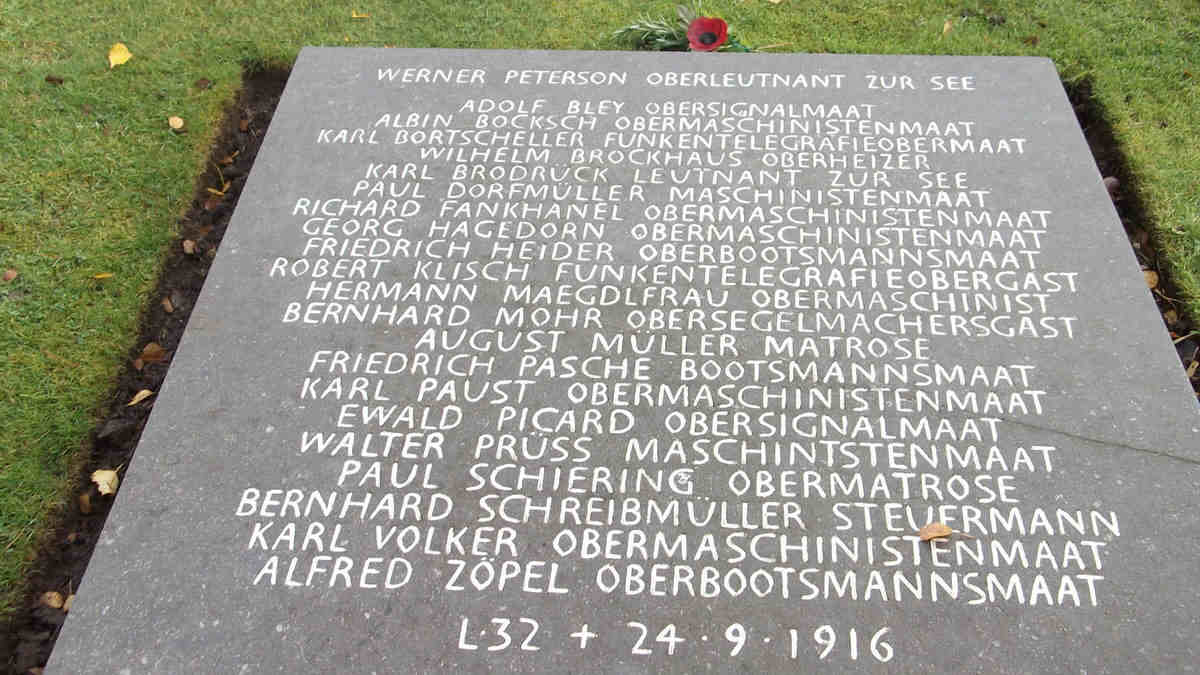
The grave of the crew of L32 |
|
Werner Peterson, Oberleutnant zur See
Adolf Bley, Obersignalmaat
Albin Bocksch, Obermaschinistenmaat
Karl Bortscheller, Funkentelegrafieobermaat
Wilhelm Brockhaus, Oberheizer
Karl Brodrück, Leutnant zur See
Paul Dorfmüller, Maschinistenmaat
Richard Fankhanel, Obermaschinistenmaat
Georg Hagedorn, Obermaschinistenmaat
Friedrich Heider, Oberbootsmannsmaat
Robert Klisch, Funkentelegrafieobergast
Hermann Maegdlfrau, Obermaschinist
Bernhard Mohr, Obersegelmachersgast
August Müller, Matrose
Friedrich Pasche, Bootsmannsmaat
Karl Paust, Obermaschinistenmaat
Ewald Picard, Obersignalmaat
Walter Prüss, Maschinistenmaat
Paul Schiering, Obermatrose
Bernhard Schreibmüller, Steuermann
Karl Volker, Obermaschinistenmaat
Alfred Zöpel, Oberbootsmannsmaat |
|
Werner Peterson
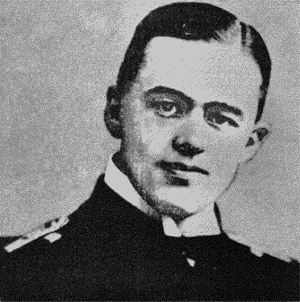 | Oberleutnant zur See Werner Peterson has been described as a gay youngster with a reputation of being the best ship-handler in the service. His first command was the Zeppelin L7, which was used for naval patrols over the North Sea. In June, 1915, he took command of the L12. In August he flew on his first bombing raid over England. He got lost, like many other airship commanders and he reported dropping a load of bombs on "Harwich". In fact they fell in the sea off Dover. The ground-based defences opened fire and the ship received a direct hit. Because of the leaking gas the L12 came down in the English Channel. A German boat towed it to Ostend - where it was destroyed by fire.
His next airship was the L16 - and on 13th October the 18 explosive and 30 incendiary bombs he believed he had dropped on "Stratford, East Ham and West Ham" actually killed nine people, and injured fifteen, in Hertford3. The following January the planned target was Liverpool, but he had to turn back for technical reasons. Peterson claimed to have dropped two tons of bombs on "Great Yarmouth" but ground-based reports only record that two bombs fell at Swaffham, some 43 miles away. At the end of March the bombs he dropped on "Hornsey" actually fell north of Brentwood, in Essex. On 2nd May the Zeppelin L23 dropped an incendiary bomb on an empty part of the North York Moors, setting the heather alight. Peterson, following in the L16, unloaded his bombs onto open moorland, thinking that Stockton on Tees was ablaze. On his return to Germany he optimistically claimed "well-placed hits on buildings at the site of the fire, as well as clearly recognisable railroad tracks and embankments". |

The grave of the crew of L48 |
|
Franz Eichler, Kapitänleutnant
Heinrich Ahrens, Obermaschinistenmaat
Wilhelm Betz, Maat
Walter Dippmann, Obersignalmaat
Wilhelm Glückel, Obermaschinistenmaat
Paul Hannemann, Bootsmannsmaat
Heinrich Herbst, Signalmaat
Franz König, Bootsmannsmaat
Wilhelm Meyer, Funkentelegrafiemaat
Karl Milich, Obermaschinistenmaat
Michael Neunzig, Obermaschinistenmaat
Karl Plöger, Obermatrose
Paul Suchlich, Obermatrose
Victor Schütze, Korvettenkapitän
Hermann van Stockum, Obermaschinistenmaat
Paul Westphal, Steuermann |
|
|
|






